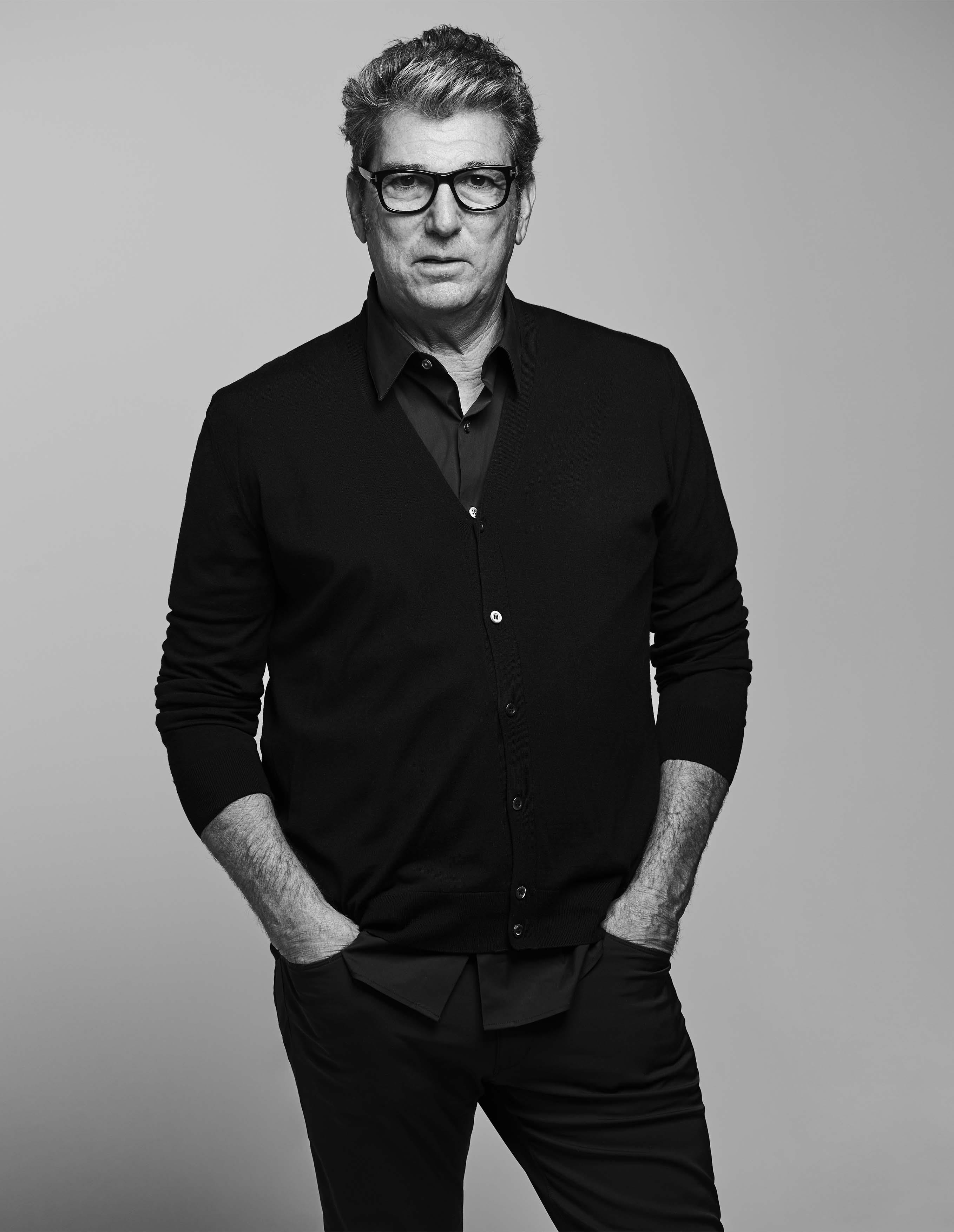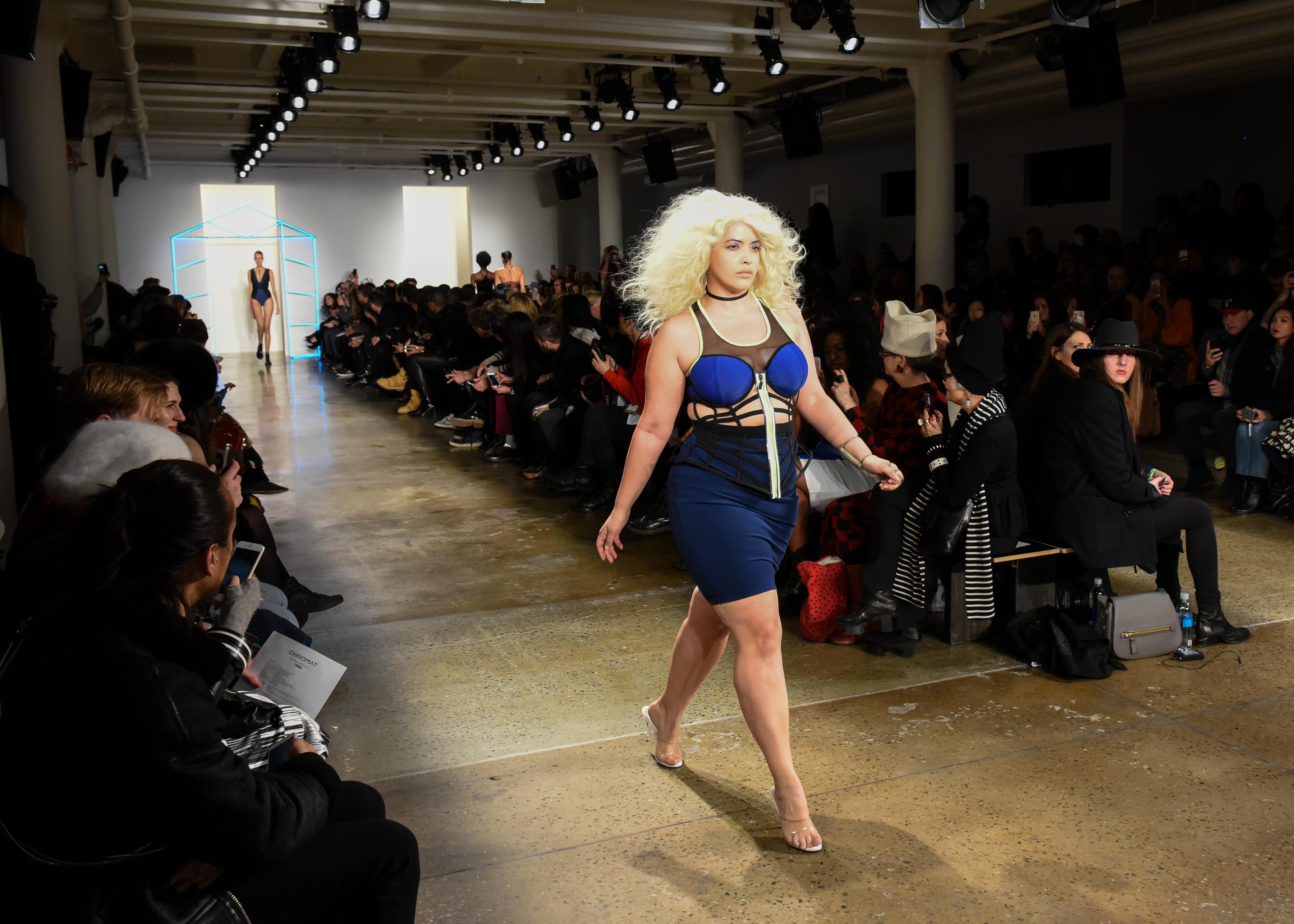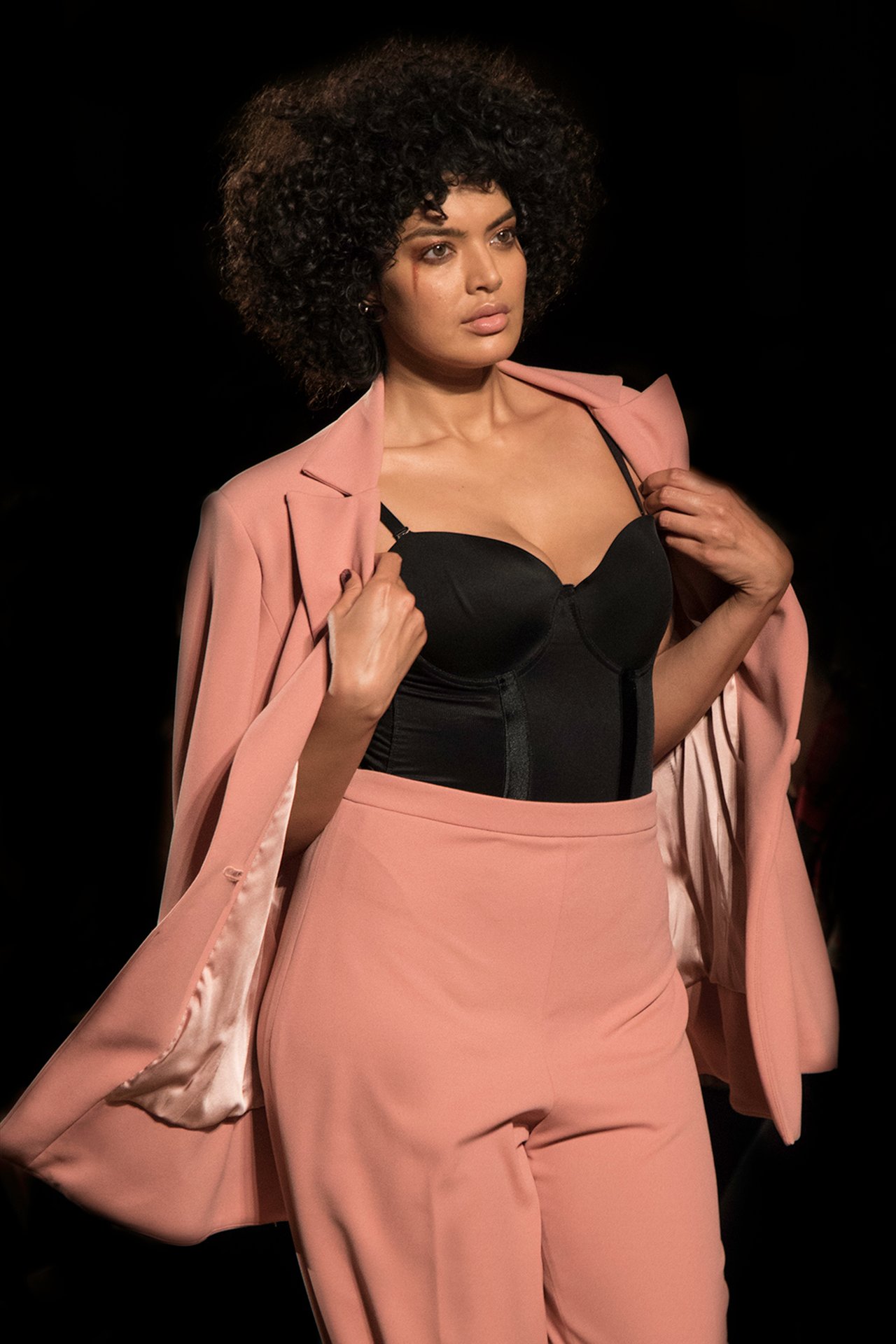The Impression/CFDA: Andrew Rosen
February 13, 2017
Constance White


Andrew Rosen sits in a comfy swivel chair at the modernly sparse New York headquarters of Theory, his contemporary fashion company. He’s spent, he said, “maybe my whole life” in fashion, but hasn’t been content to just bask in the glow of the storied Rosen name or the success of Theory. He’s become a sort of Medici of fashion, lending support to fledgling companies. But It’s a rocky time in fashion.
“The marketplace is definitely in a state of disruption,” said Rosen.
We asked him about what motivates him to patronize young designers.
What drives you to invest in young designers and companies, and how many do you help?
I help them, but they help me a lot, too. It keeps me fresh. I don’t really want to list all of them, but there’s Proenza Schouler, Rag and Bone [He is also involved with Alice & Olivia and Helmut Lang]. There are a few other small ones that I have.
I love our industry and I invest in companies and at the end of the day I want to make money, but I really invest in companies because people inspire me.
I want to be part of helping our industry move forward.
Things are moving very fast. I want to see what’s around the next corner.
You invest money and your time and expertise. How do you work with companies?
Basically, I deal with the principals of the companies. There aren’t any formal quarterly board meetings. My conversations happen on a regular basis, organically, and most of the people are close friends of mine.
The principals would call me. There are always forks in the road. You can make this decision or you could make that decision.
I let them stick to their decision. Hopefully, it’s not one of the decisions that would be catastrophic or business ending, but I genuinely believe that you learn more from your mistakes. Maybe inside Theory it’s a little different [laughs], but generally, I listen to everyone’s opinion and give them my advice.
Who do you have your eye on this year?
I never am looking for new things because I have so much going on. I give advice to a lot of people. The work that I do with the CFDA Fashion Fund is part of that. People want to meet with me. Hopefully, I give them good advice.
How do you do that?
I try to understand where they are and what they are trying to accomplish. I give them my opinion and it may not be what they want to hear. It all comes down to whether they want me to be honest with them or nice.
Has anyone ever asked you to be nice?
No.
Is there any designer who you invested in and quietly exited?
There have been a few of those. Not that we have to talk about them, but not every company that I invest in has to work out.
Do you have a standard equity position that you take?
No. It depends on the make-up of the company. I generally will tailor it so that it works for them and it works for me. I’m investing in the vision they want to achieve themselves.
I will not get into a company where I, in any way, shape or form, have to provide any management.
What do smart designers do that others don’t?
I believe they not only have an artistic capability, but they have to have some sort of vision. They also have to be able to see the commerce, because without commerce there is no art, and without art there is no commerce.
If you look at the successful companies, it has always been about the ability to not only create amazing products, but to be able to have someone monetize them, too.
What’s the outlook for young designers or small design companies?
In some ways, I see a lot of opportunity because stores are going to need something different.
What do emerging businesses have to have to succeed?
These companies, if they don’t have the ability to deal with the scale and growth of the business – whether they themselves do it or someone else does it – it becomes hard.
If you look at the successful companies, it’s always been about the ability to not only create amazing products, but to be able to have someone monetize them.
What about the web? Doesn’t that help?
The web creates a lot of accessibility and visibility buy it’s not a magic formula or bullet. The business is still complex. One of the things that’s interesting today is collaboration with bigger companies. But those designers that have a little something extra special are always gonna win.
What would you say are the biggest challenges and opportunities of web-based business, because there’s globalization as you said, but also the web has been a huge disruption to fashion?
Brick-and-mortar retail, we’ve been doing for millions of years, tens of millions of years. Internet retailers and ecommerce, virtual commerce, is 10 years old.
Although the space is free, developing the content and the logistics of retailing is not free. I think it’s just a huge learning curve for lots of companies. Now there are some other companies like Amazon who have figured it out and that’s what they do and they have some exciting stuff happening. I know lot of people that are afraid of Amazon.
Are you?
Listen, I think that at Theory and the businesses I’m involved in, I believe there’s lots of opportunity if we’re focused on our strategy and we are able to develop great product that’s focused on the customer: How we inspire him or her, how we service him or her. focused on the customer.
Whereas before there was a lot of focus on the brand, now there’s and equal focus on what we need to do for the customer.
What’s the major change that you see in fashion?
Businesses have to move at a much faster pace today.
There are new requirements for investing money. When I started we were selling clothes to traditional department stores. Now 50 percent of our business is done outside the U.S.
Our direct-to-consumer business in our own stores and on the internet on a global basis is bigger than our wholesale business. In order to invest in our direct-to-consumer business, our internet business, I have to look at how our business is organized and that’s what I’ve basically spent the last two years doing – re-organizing the way our company does business; the way we design develop, merchandise and market our products.
The retail landscape today is totally disrupted. Players are looking to find their place in a landscape that has totally changed. We‘ve been lucky at Theory that we have gotten a great position in the marketplace.
Our brand is stronger than it’s ever been before. With the things we’re doing both online and in physical retail, our brand is growing at a good clip. That’s more the exception than the rule today.
You have said in the past that even with all the disruption that is happening, big, traditional department stores still play an important role. Do you still believe that?
It’s changed a lot. The space they occupy in the marketplace now is very different to the space they occupied in the marketplace five years ago. We are overstored. The immediacy and the transparency of the internet has changed the landscape. The customer wants more curated experiences. They don’t want a general department store environment.
There’s going to be a major shakeout of the retail landscape. I think the department stores still play a role. In my opinion it’s not as dominant a role as they once played.
There’s a lot more choice for the consumer. Not so long ago the department store was a huge center of the choice. Now you have vertical retail operations that are more accessible and some that are from outside of the U.S. that have dislocated vertical retailers in the U.S.
Zara’s a huge one, right?
There’s Zara, there’s H&M, there’s Uniqlo, there’s Primark. There’s a whole host of them that have come into the U.S. because the U.S. seems like an easy place to expand your business in, but it’s become trickier.
You have the benefit of coming at this with a lot of experience, a lot of insight. What does this all mean for Theory?
I’ve been involved in the design retail business for more than 40 years and if you want to say that my father (Carl Rosen) and growing up in the family, then maybe I’ve been in fashion almost my whole life. Even I’m learning and I don’t understand everything. There are new changes and in my mind there‘s a whole lot of opportunity. One has to be strategic not only, because of the complexity of the retail landscape today including the internet, but to be successful one has to operate on a global basis not a local basis.
What’s the biggest change underway at Theory?
The fact that we used to be a wholesale company selling to retailers and now we’re becoming a retail company. We’re becoming a retail company whether we do business in our own store or on our own website or someone else’s store. We have to be focused on what’s gonna drive the customer, what kind of product she needs, what kind of service she’s demanding. Our company has just become a lot more customer-centric because it has to. It’s the direction of what companies need to be to succeed in the world today.
What’s the split between your brick-and-mortar business and your web business?
Our business at Theory is still very underdeveloped on the web. I don’t think we’re alone in that respect. Companies in our industry are still very much behind the curve of where we should be digitally. That comes from the fact that that’s a secondary business for us not a primary business.
Our company has lots of expertise when it comes to designing, merchandising, manufacturing and retailing in the world that was. In the world that is and is going to be, we are learning like everyone else, and having to put together a new team of digital experts and data science, it’s a new phenomenon for us. We understand the opportunity; we understand the challenge.
And what percentage of the business is women’s versus men’s?
Men’s is about 25 percent but the men’s business is a fast-growing business. We see a lot of opportunity there.
Yes, there’s a lot going on in the men’s space right?
Yes, there is. If you look at the retail landscape you see the men’s business is doing a little better than the women’s business. I do believe there’s a lot of opportunity there and we’ve made lots of changes in our men’s business. We have a new creative director. We’ve been working a lot on our merchandising system both for women’s and men’s. Definitely were more focused on curation of products. The development of go-to We refocused hero pieces. More focused on fabric. More focused on fit. Really developing things that are the essence of where we started as a company
When Theory started it got attention of course because you were doing it. But then it quickly moved to proof of concept known for the incredible kick-ass pant, the perfect, perfect jacket that any career woman worth her salt wanted to wear. What is it today?
I think it’s still those perfect pants those go-to items: the shirt, the jacket, I think it really is still about that, but the great thing is we’ve continued to add innovation in fabrics. I think our fabrics are the best in the market and our price/value relationship is incredible.
The other thing we’ve added that is new for us, is color and I think we’ve added a new dimension of excitement and energy to the clothes with the color.
You don’t think of color when you think of Theory.
No one thinks of color. This is something we added this past fall and as I’m looking at spring and we’re looking at the next fall collection it’s an eclectic collection of texture, of color. It’s an exciting time for us. We’ve done a lot of work on our brand and now we’re doing a lot of work on engaging our customer.
Some of the things we’re doing in our retail stores is paying off in a huge way. Our comp. business is well over 10 percent for the last four months of the year. Our ecommerce growth is over 20 percent. Our China business has been explosive. Japan like the US is a more mature business, but also doing well. In Europe, in London we strengthened our infrastructure.
We’re doing an extensive training program with sales in the stores.
Customers want a lot of service.
Who’s your biggest competition?
I’m not so focused on competition; I’m focused on us moving forward. As long as we can continue to execute and evolve, innovate and invest in our business platform, I’m not focused on who we’re competing with.
I’ve been doing a lot of work on organization. The organization of companies today is critically important. It’s critical companies are able to get rid of the bureaucracy. I’ve worked across divisions to create pod units to be able to move and execute things in a faster way.
It will allow the company to be set up to meet the changing needs of our business.

